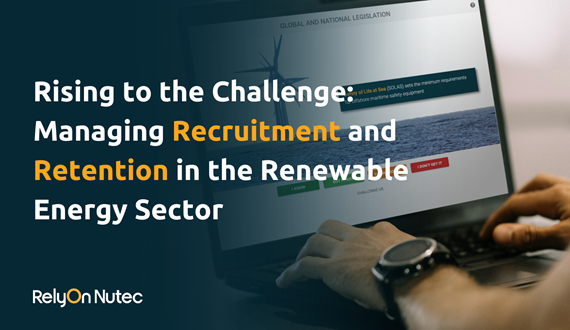Ok
The purpose of HSE
You may be working in a well-functioning company or organisation though having challenge in handling mitigation of incidents, caring for the health of your employees or living up to legal requirements and own expectations in relation to handling environmental issues.
Health Safety and Environment, also abbreviated HSE, is all about that. HSE is a collection of tools, systems and processes to avoid health issues and injuries for our employees and for protecting the environment. In most ways these are the main focuses and aims for the HSE organization in a Company or organisation. This might not be enough. You may, on top of your own HSE challenges, have Suppliers which safety you have to relate to as well. Much of the work related to HSE is about analysing and setting up the right precautions and barriers towards any risk and danger coming from both inside the organization and from external stakeholders.
Avoiding our employees to be harmed or injured should be the result we aim for, but we still experience Accidents and Near Misses in all our industries. This is in spite of our knowing that there have never been an accident which could not have been avoided. An accident in a company or organization can have the potential to damage, not only the employees, the environment or assets, but also the company reputation.
To maintain and secure a stabile business continuity, HSE will have to be firmly implemented and well anchored in the companies or organisations by a strong safety leadership. It needs to be highly prioritised by company management and maybe even also be a part of the company values. To have a fully implemented HSE system the companies and organisations needs to have full engagement on both strategic, tactical and operational level.
The organisation of HSE:
To obtain accurate knowledge about the status of HSE in a company, all the work within HSE must include personnel from both strategic, tactical and operational level. The company HSE plan describes the role and tasks for all the levels of the HSE work for both the company employees and the service and supplier companies.
Strategic Management:
The company top management sets the strategic aims and sets the company’s internal HSE requirements and establish systems for ensuring compliance with regulations and mitigation of threats of injuries on personnel, environment and assets. These requirements can be communicated via e.g. procedures, company politics and the HSE plan via the company management system. It is the role of company top management to ensure that means and resources are available for the tactical level which normally develops the plans for achieving the HSE goals. The management should think in HSE from the first thought of a new project and further during the tender management to the finalisation of the project. The strategic management is also responsible for the companies or organisations Company Business Contingency Risk Assessment which describes the risks and mitigation measures for the company and its reputation.
Tactical Management:
The tactical level is normally dealt with by a Corporate HSE Manager and HSE specialists. The tactical level will measure and analyse the HSE status and plan initiatives by selecting tools and methods to improve the HSE level up to the aimed goals. This can be done by a methodical approach and follow ups on all incident reports and statistics, which often provides information about which are the e.g. safety and culture issues on the workplace. These reports are normally categorised in.
- Safety Status Measurements such as e.g. LTIF, TRIR etc.
- Incident categories such as: Accident Near Miss, observations etc.
- Injury categories such as: FAT, LWC, RWC, MTC, etc.
- Situation categories such as: Falling objects, Slips trips etc.
Having the information from the reporting and statistics, it is to some degree possible to measure which of the issues should be prioritised? This might be issues like e.g. safety instructions, training of personnel, safety Culture, safety behavior, training in human factors, competence management, communication skills. The tactical level also conduct investigations of the incidents. These investigations are normally done according to an approved standard such as Bow-tie, TapRoot, Tri-Pod or Five why?. All conclusions and root causes which are described in the incident report must be followed up by tactical level which may result in change of procedures, politics or plans.
Operational management:
Having both the strategic level and the tactical plans in place, the operational level can be implemented. It is often a company Site HSE who are in charge of the HSE on operational level and the task of the operational level is to implement and ensure compliance with the tactical plan. The tasks of a Site HSE (Operational HSE) is besides his task to overview the daily safety on the workplace also to conduct operational risk assessments such as e.g. HAZARD/HAZOP Recognition ALARP and RAMS and Toolbox Talks and report to Corporate HSE Manager (tactical level)
Crisis Management:
Dealing with emergency situations is also a task within HSE. When a larger emergency situation occurs it is important that the company is ready to respond immediately and proactive as possible. Therefore, most companies have an Emergency Response Plan which describes all tasks for both internal and external stakeholders and available resources in case of an emergency situation. When an accident occur, all we want is to save people, protect of environment, keep assets intact and protect our company reputation. If we manage to do that, we may have a chance to keep up our business continuity. It takes a firm organised planning, procedures, skills and training to ensure a sufficient response to various crisis situations.
Some members of an Emergency Management Team are organised to respond directly on the incident, some are organised to handle the consequences and some are organised to handle the company´s business continuity. This is why most of the crisis management organization is normally separated up in 3 lines:
- 1st line (operational) handles the incident itself locally
- 2nd line (tactical) handle the consequences of the incident from back office
- 3rd line (strategic) handle business contingency from headquarter
We can help you:
We are able to provide you with systems, tools and training to ensure a firm setup which will make it easier to manage all the various situations. Our systems, tools and training is based on thorough risk assessments and enable you to handle situations and mitigate eventual damage on people, environment, assets and company reputation.
Through the previous 30 years RelyOn Nutec have grown to be the biggest provider of safety training and consultancy and we have developed and delivered outstanding methods of implementing systems, tools and training for a numerous different industries, both on our facilities but also at our clients facilities.
RelyOn Nutec can deliver knowledge as both standard courses and tailor made solutions for the specific companies. This can be provided as both traditional courses, e-learning and via consultancy. It simply depends on which solution works best for you.
Next read
-

-

-
 Article 14. June 2024
Article 14. June 2024 -

Ensuring Safety and Efficiency: IRATA Rope Access Training for a Safer Work Environment
In industries such as oil & gas and renewables, where accessing challenging locations is common, rope access methods provide a safe and efficient solution. These methods offer technicians a secure means of navigating heights and restricted areas while minimizing environmental impact. However, proficiency in rope access requires proper training and a globally accepted safety education.
Article 4. June 2024 -

Polaris Sells RelyOn Nutec to Mubadala Capital
The acquisition, part of Mubadala Capital’s flagship Private Equity Fund IV, strengthens the asset manager’s footprint in the business services sector.
Article 24. May 2024 -

RelyOn Nutec Acquires Electrical Training and Consultancy Specialist Quercus Technical Services, Fast-tracking European Electrical Capability Build
Effective May 21st, RelyOn Nutec has acquired Quercus Technical Services BV, one of the largest specialist electrical safety and skills training organizations in the Netherlands. The acquisition of Quercus bolsters RelyOn Nutec’s position in the electrical training market and accelerates its European roll out.
Article 22. May 2024 -

-
 Article 2. May 2024
Article 2. May 2024
